People have asked me a gazillion times why America didn’t go metric, as if I have some sort of control over the United States. (If that was the case, there are a few other issues I’d tackle first.) I’ve offered my thoughts on why the U.S. did go metric in one or two of my books, but a few books have been written entirely about the subject. I haven’t read any of them because I’ve got my hands full converting recipes that I’m working on, like this amazing chocolate tart.
One thing about metrics is that it makes testing and developing recipes easier. It’s a lot easier to scale up a recipe in metrics by 20% than it is in cups: 20% more of 100 grams is 120 grams, which is a lot easier than scale-up, say 2/3 cup by 20%.
I first had this tart when I was a guest of someone at L’Ambroisie, probably the greatest, and definitely the most expensive restaurant in Paris. The way I learned about the prices was because they automatically gave me the menu with the prices on it, which men get and women don’t in most three-star restaurants. While women got the right to open bank accounts in France in 1965, and as of 2013, Parisian women could wear trousers, it’s an old habit that seems to be dying hard.
It was awkward as I was a guest of the woman who had invited me. Before I embarrassingly asked if she wanted to change menus with me, I got a look at the prices; first courses range between €90 and €140 and main courses run €110 to €170, so I haven’t been back on my own.
I have to say the food and experience were worth it, not enough for me to go back on my own dime, but my seat at Hamilton was around the same price as dinner, and when you eat in a restaurant like that, while you’re paying for the food, you’re also paying to be in such sumptuous surroundings.
For me, the Tarte fine sablée au cacao amer for dessert was the showstopper. It wasn’t fancy, but it was memorable. It was an ethereally light dark chocolate filling in a buttery crust. The chocolate dissolved almost instantly in your mouth, without chewing, and was such a perfectly sliced triangle that I was sure that someone in the kitchen had used a laser to slice it. While it’s vulgaire in France to discuss money, the tarte was €36.
I’m not a “recipe, please!” kind of guy because I’m fine enjoying something in the moment and not worrying about reproducing it. As a friend said to guests from overseas at a wine tasting, who were scrambling to figure out how they could ship some wine home from France, “You don’t need to own it, you just have to enjoy it.”
However, when I came across a copy of L’Ambroisie: Place des Vosges à Paris by chef/owner Bernard Pacaud (it’s out of print and a copy will cost you as much as dinner at the restaurant), I looked to see if the tart was in there…and it was!
There were some, um, issues with the recipe, and it didn’t quite come out as anticipated. The pastry was way too much, and the filling was way too little. As someone said to me when I mentioned it, “Of course the recipe in the book doesn’t work. He didn’t want to give it out.”
I’m not sure that’s true, but once I had the recipe in my hands, I didn’t want to let it go. Even before I made the tart, the first hurdle I would face sharing the recipe was that his was made in an 8-inch (20cm) tart pan. Knowing that no one out there has an 8-inch tart pan, I scaled it up for a more standard 9-inch (23cm) tart pan.
(I had a pastry chef friend in Belgium who wanted to do a cookbook for Americans but balked when I told him all his cake recipes needed to be in 9-inch cake pans as no one wanted to make a recipe that called for “Eight 5-inch individual cake pans.” He also wasn’t thrilled when I mentioned cups and tablespoons, too.)
I know some of you don’t want to use metrics and/or don’t have a scale. So while I gave the measurements in both systems, I encourage you to use the metric ones if you can. While I don’t mind using either system of measuring, metrics makes things a lot easier when you’re developing recipes, such as if you want to reduce something that is 2/3 cup by 25%, it’s going to be tricky, whereas if you want to reduce 100 grams by 25%, it’s a piece of cake…or in this case, a slice of tart.
On my first try, the dough was way too thick for the amount of filling:
I didn’t mind it so much but wanted to work on getting the amount of dough down so it wasn’t taking up too much real estate.
The next tart I made had a thinner crust, but I still wanted to ramp up the amount of filling in it, even though Romain wolfed it down. I also wanted the filling to be more airy, like the one above, and not so compact, like the one below. (The original recipe calls for eggs and egg yolks, and it’s very tricky to increase a recipe that calls for 1 egg yolk by 25%, or even 50%.)
I was getting closer (below) but wanted just a little more filling. Although if you like it this way, there’s 180g chocolate, 1 egg, 3 yolks, 45g sugar, and 115g butter in the filling, and you can go with those proportions and bake for 10 minutes.
I was going to stop there, but I was rather fixated on getting it right. I kept toggling between trying to increase the number of eggs and yolks, along with the chocolate and butter, and I almost wanted to become one of those people who measures eggs in liquid volume or weight, which I know would make you hate me, so I gave it one more go—number 5—and just doubled the filling recipe to see what happened.
Voilà—it turned out great! High and lofty, rich and chocolatey, but yet light and almost soufflé-like. I set the tart pan on an overturned moka pot bottom (you can use a coffee can or something similar), then slid the tart onto a flat surface to slice it, using a warm knife. (I warmed the blade over the flame of my gas stove for a few seconds, wiping it clean between each slice.) I didn’t do a picture-perfect job with the slice as I was eager to taste it after I took a picture.
It was just right and absolutely perfect. My only advice is to use very good dark chocolate. On one try, I made it with supermarket dark chocolate, and it was just okay. If you’re going to eat chocolate, make it a good one, and while you don’t need to use the best, most-expensive chocolate, considering they sell a similar tart for €36/slice, this is a pretty good deal.
Tarte sablée au chocolat
8 to 10 servings
Inspired by L’Ambroisie Place des Vosges à Paris by Bernard Pacaud
I made a lot of changes to the recipe and the instructions but kept the spirit of it intact. The only tricky part is rolling the dough. It may require a bit of moxie to roll it out to the right diameter, and peeling off the parchment paper can cause the dough to tear if you’re not careful. But it’s not a big deal if it does. Go slow and if it does happen, just pinch and patch it together once it’s in the tart pan. Once the tart is baked, no one will be the wiser.
I gave extra tips in some of the steps to walk you through the recipe. It’s not difficult at all, but I added a few astuces (tips), which hopefully you’ll find helpful.
In one of my tests, I used supermarket dark chocolate, which was the worst of them all. So do your best to get a good dark chocolate—Lindt (easily available, and not super expensive) will do just fine. Here I used a 72% Cacao Barry from Venezuela, which I bought some in bulk, but I think something in the 65-75% range would fill in nicely. I don’t like to call for brands too much since they vary, and not everyone has the same access or budget, but good brands are Cacao Barry, Callebaut, Valrhona, and Guittard. Less expensive and perhaps more readily available are Trader Joe’s 72% dark chocolate Belgian block and Green & Blacks chocolate, among others. Don’t use chocolate chips as most are designed to resist melting.
[Get printable recipe here.]
Sablée Dough
100g (3 1/2 ounces) unsalted butter, cubed, at room temperature
75g (6 tablespoons) sugar
pinch of salt
1 large egg, at room temperature
170g (1 cup plus 3 tablespoons) flour
Filling
300g (10 1/2 ounces) bittersweet (not unsweetened) chocolate, coarsely chopped
200g (7 ounces) unsalted butter, cubed
60g (5 tablespoons) sugar
2 large eggs, at room temperature
4 large egg yolks, at room temperature
1. To make the dough, in the bowl of a stand mixer fitted with the paddle attachment, mix on low-medium speed (don’t whip) the cubed butter, sugar, and salt until mostly smooth, about 45 seconds, stopping the mixer midway to scrape and stir the ingredients so they’re mixing evenly. Add the egg and mix for about 30 seconds until everything is well incorporated and the mixture is mostly homogeneous, but don’t worry about some small lumps of butter.
(The original recipe said to “mix the butter, sugar, egg, and salt with a spatula, then incorporate the flour.” So if you don’t have a stand mixer, you can follow Chef Pacaud’s instructions and do it his way.)
2. Gradually stir in the flour at low speed until it’s just incorporated. Stop the mixer and use your hand or a spatula to gather the dough into a solid mass. Shape it into a disk and either wrap the dough in plastic wrap or an eco-friendly alternative or put it in a bowl covered with a damp towel for 30 minutes in the refrigerator.
(You can chill the dough longer, but you’ll want to let it sit at room temperature for about 10 to 15 minutes or so before rolling it, as it’ll be too firm right from the fridge.)
3. To roll the dough, place the dough between two large sheets of parchment paper and use a rolling pin to roll it out until it’s 13-inches (33cm) round. When rolling dough this way, midway during rolling, I like to peel off one side of the parchment paper and re-place that same sheet of parchment paper back on top of the dough, then flip the whole thing over and do the same on the other side, to smooth out any wrinkles in the paper.
(The dough doesn’t have to be a perfect circle as you’ll be trimming it in the next step.)
4. Peel off the top layer of parchment paper. Overturn a 9- to 9 1/2-inch (23cm) tart pan and place it in the center of the dough, and with élan (verve), holding both the tart pan and keeping the dough in place, turn them both over simultaneously. Gently peel the parchment paper off the top of the dough. It’ll be sticky, but if you peel it back, slowly coaxing the parchment paper off with one hand while using the other to keep the round of dough in place, it should come off fine. If the dough tears, you can pinch it together.
5. Ease the dough into the pan by lifting the edges and letting it fall gently into the inside edges with a little help from your fingers. Avoid stretching it. Press the dough slightly against the sides of the pan to even it out and reinforce it, then roll the rolling pin over the top of the tart pan to lop off the overhanging dough.
(Save all the dough scraps in case you need to use them later to patch anything. If not, they can be rolled out and cut into shapes to bake little sablés, or butter cookies, out of.)
6. Freeze the dough in the tart pan for at least 30 minutes. (It can be made ahead and frozen for a couple of days or weeks. If so, wrap it well.)
7. To bake the tart shell, preheat the oven to 375ºF (190ºC). Line the tart pan with foil and fill with pie weights or dried beans and bake for 20 minutes. Carefully lift out foil and beans and bake until the bottom of the dough is cooked, but not necessarily over-browned, about 8 to 10 minutes.
(After you lift the foil out, the sides of the tart will bake faster than the bottom, and you don’t want to overbake the sides, but I made this tart five times and the outside crust didn’t get too dark.)
Remove the tart shell from the oven. Reduce the heat to 350ºF (180ºC).
8. To make the filling, while the dough is baking, melt the chocolate and butter in a heatproof bowl set over a pan of barely simmering water, stirring it until almost smooth. Remove from heat and stir until smooth. Set aside.
(Depending on the temperature of your kitchen, you want to make sure the chocolate and butter mixture hasn’t thickened too much and firmed up before you fold it in, in the next step. If it’s cool where you are, keep the pot of warm water handy and if the chocolate gets too firm, stir it over the warm water for a few seconds before folding it in, in the next step, but you don’t want it warm or hot as it’ll deflate the eggs.)
9. In the bowl of a stand mixer fitted with the whisk attachment, or by hand in a large bowl with a whisk, briskly whisk the egg, egg yolks, and sugar together until it is thick and mousse-like, and holds a soft shape when you lift the whisk, about 5 minutes.
10. Very gently fold the beaten eggs into the tepid chocolate, just until no visible streaks of egg remain. Do not overfold (i.e., better to have a few streaks than deflate the mixture). Wipe the bottom of the bowl so it’s dry, then scrape the filling into the baked tart shell and bake until the tart feels almost set in the center but is still quite soft and tender, about 12 minutes. Err on the side of underbaking rather than overbaking. Better to rely on tactile and visual clues rather than fixed numbers.
Let tart cool completely, then remove the outer ring of tart pan and serve.
Serving: This tart is quite rich and a little goes a long way. A scoop of vanilla ice cream or some softly whipped cream would be nice accompaniments, but it’s just fine on its own.
btw: Here’s what you can do with those dough scraps!
This post is for all subscribers. Thanks for subscribing!

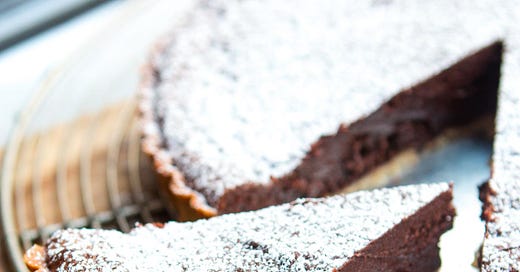





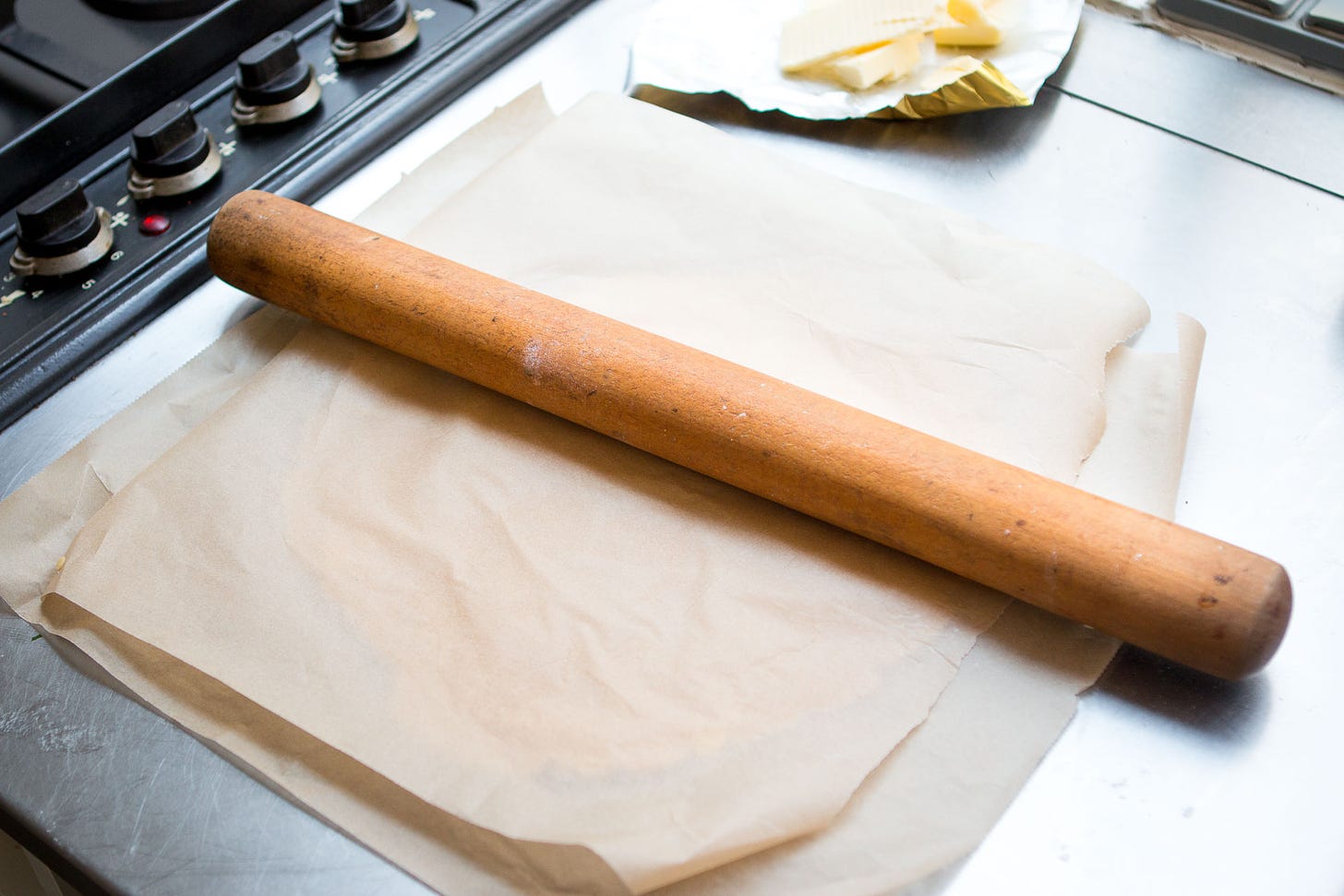
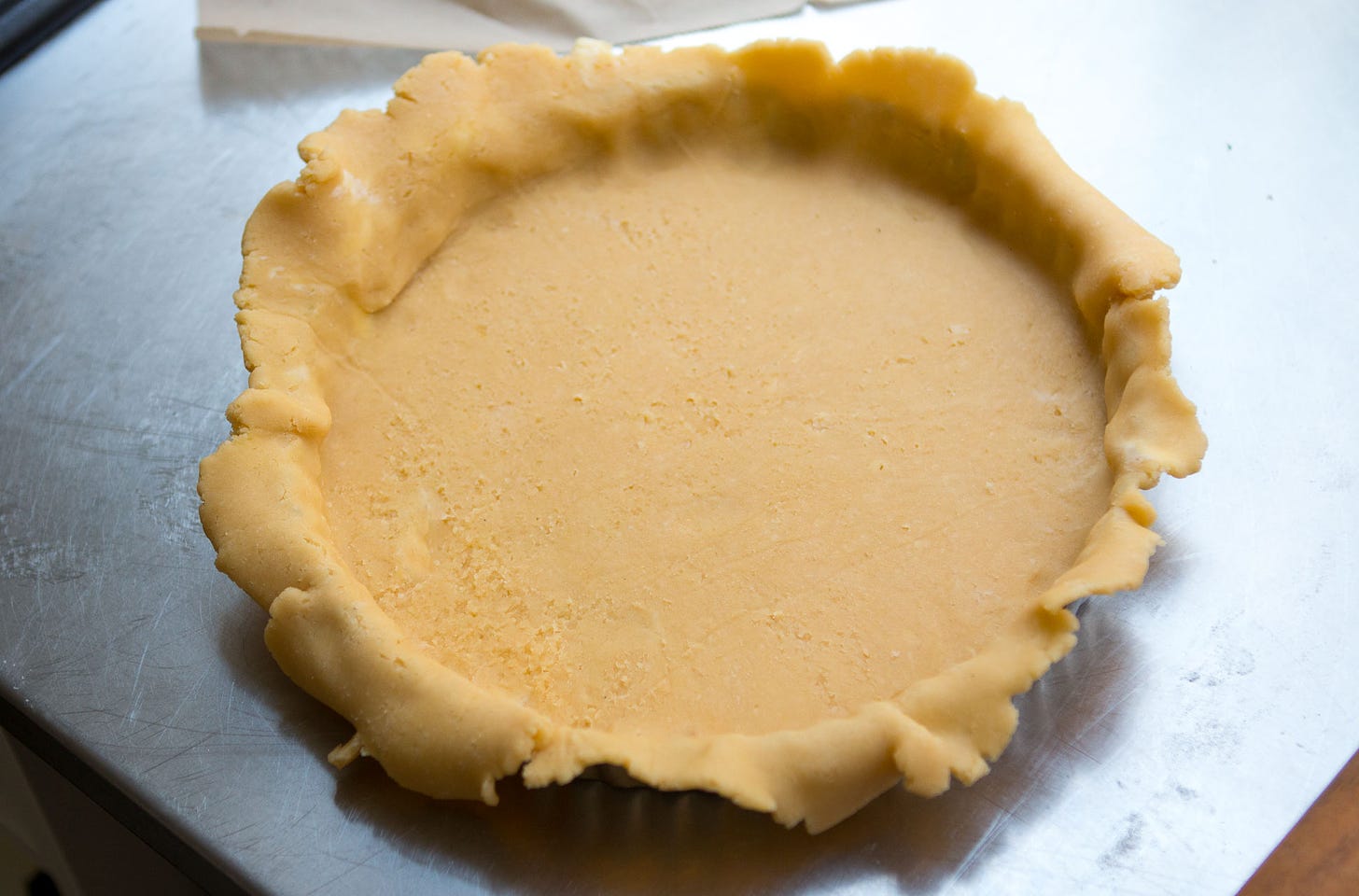
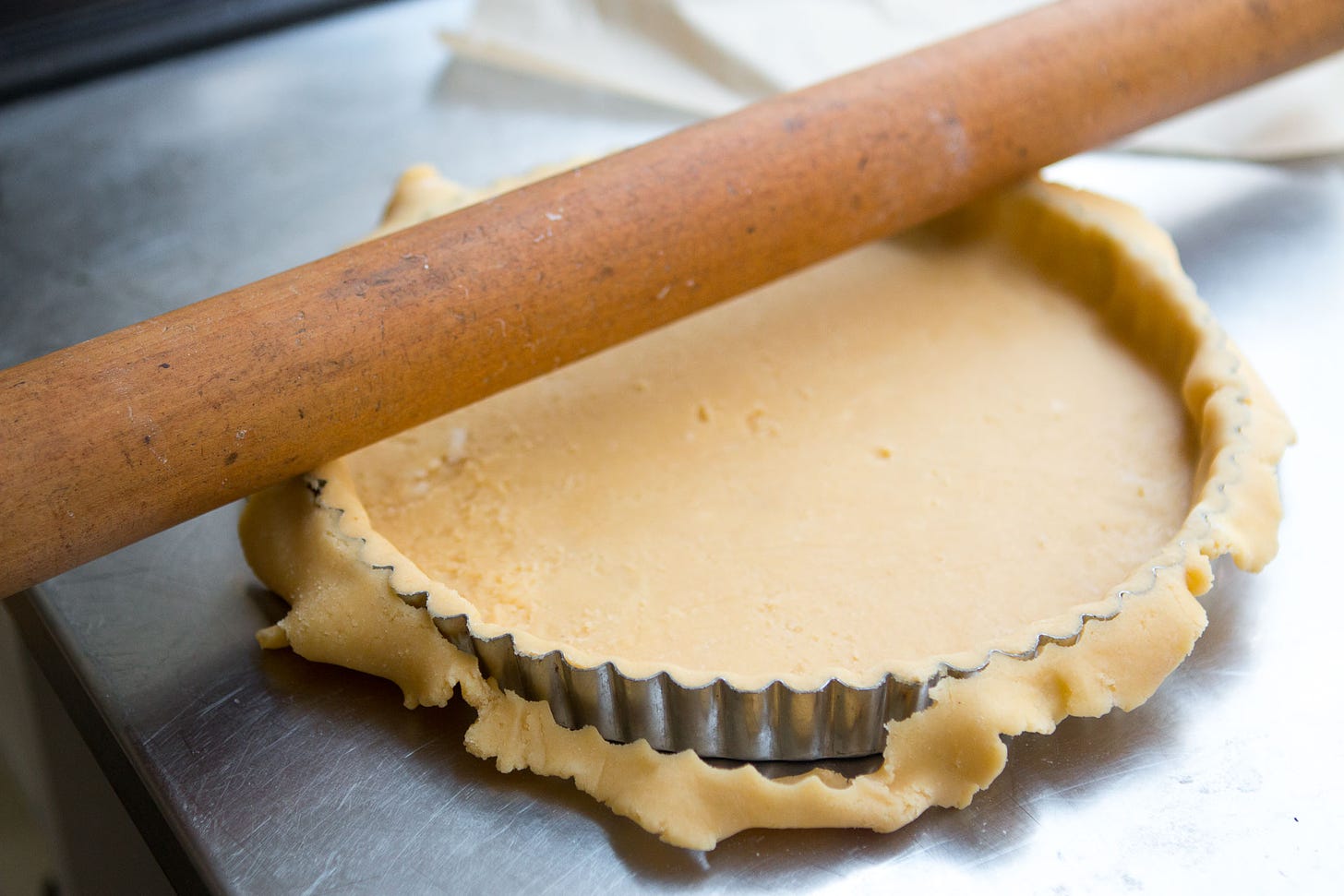
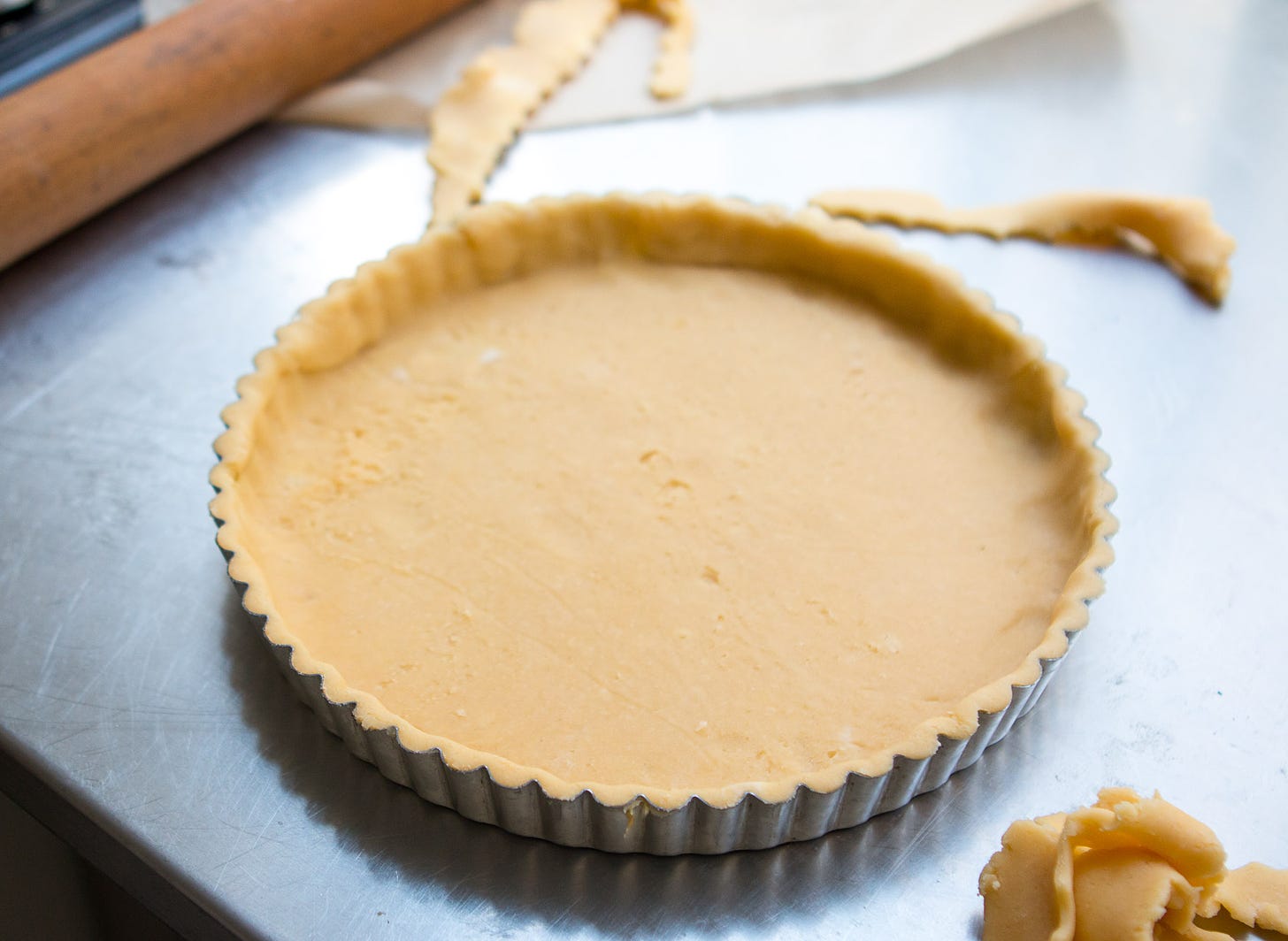
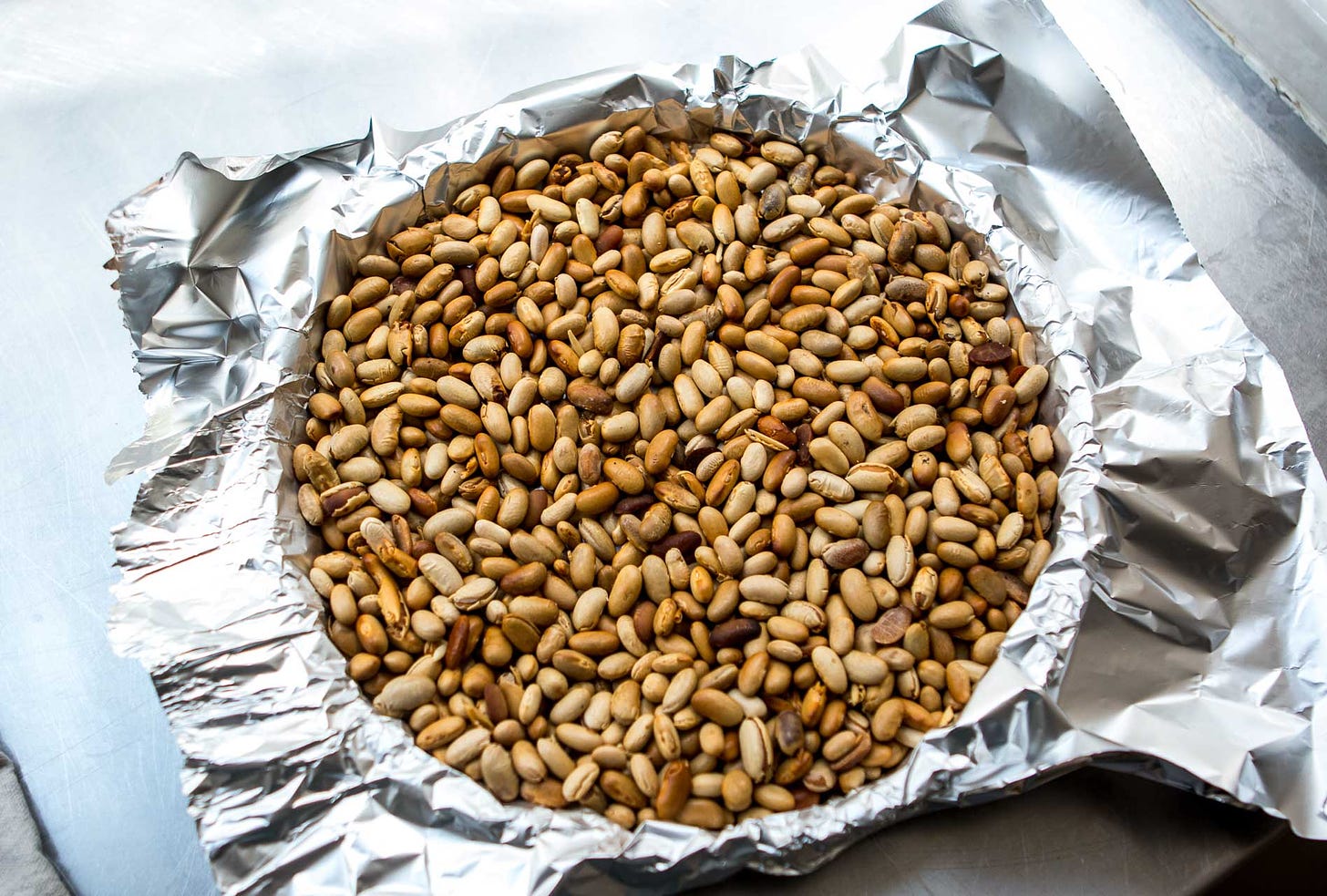
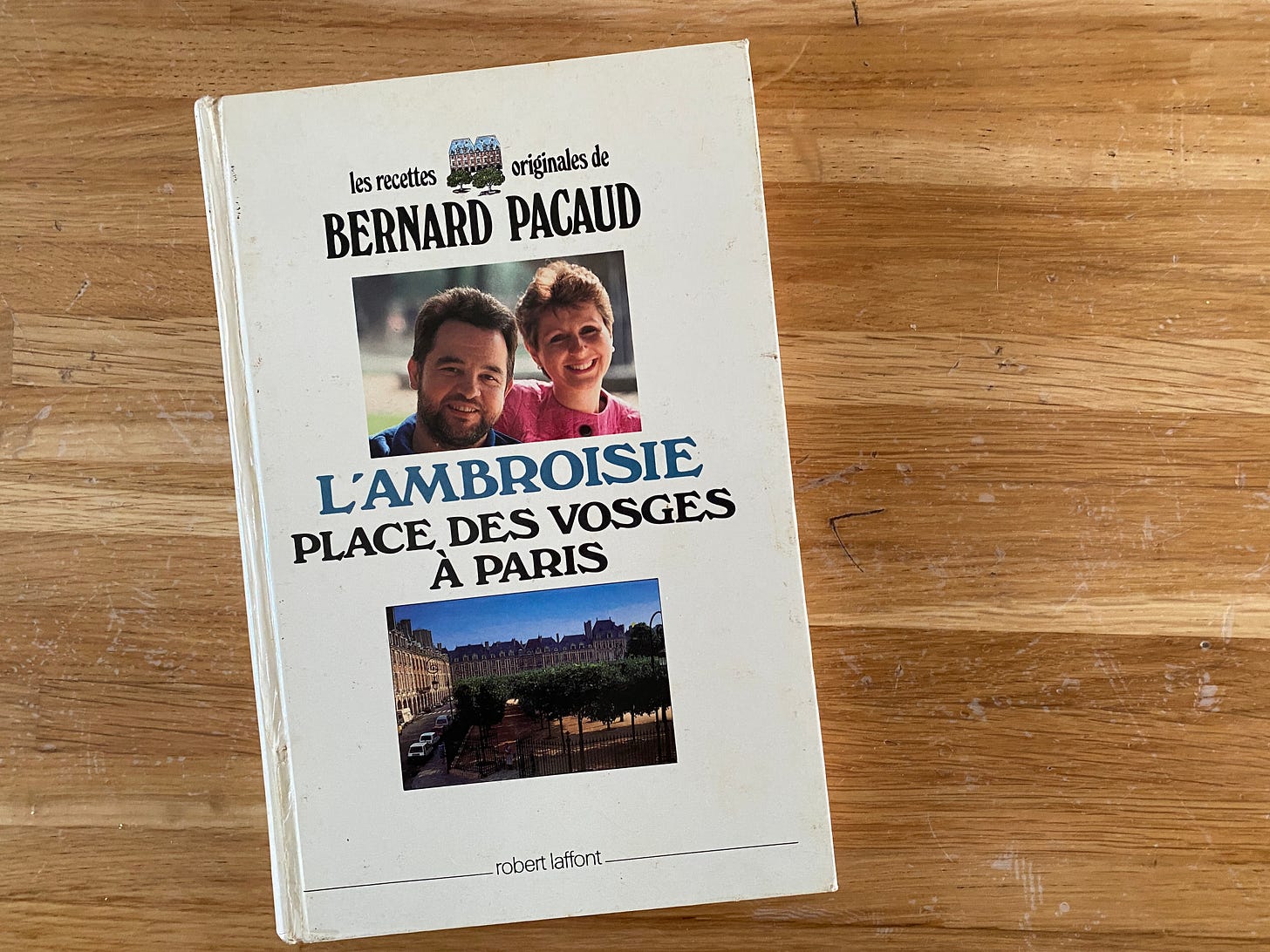



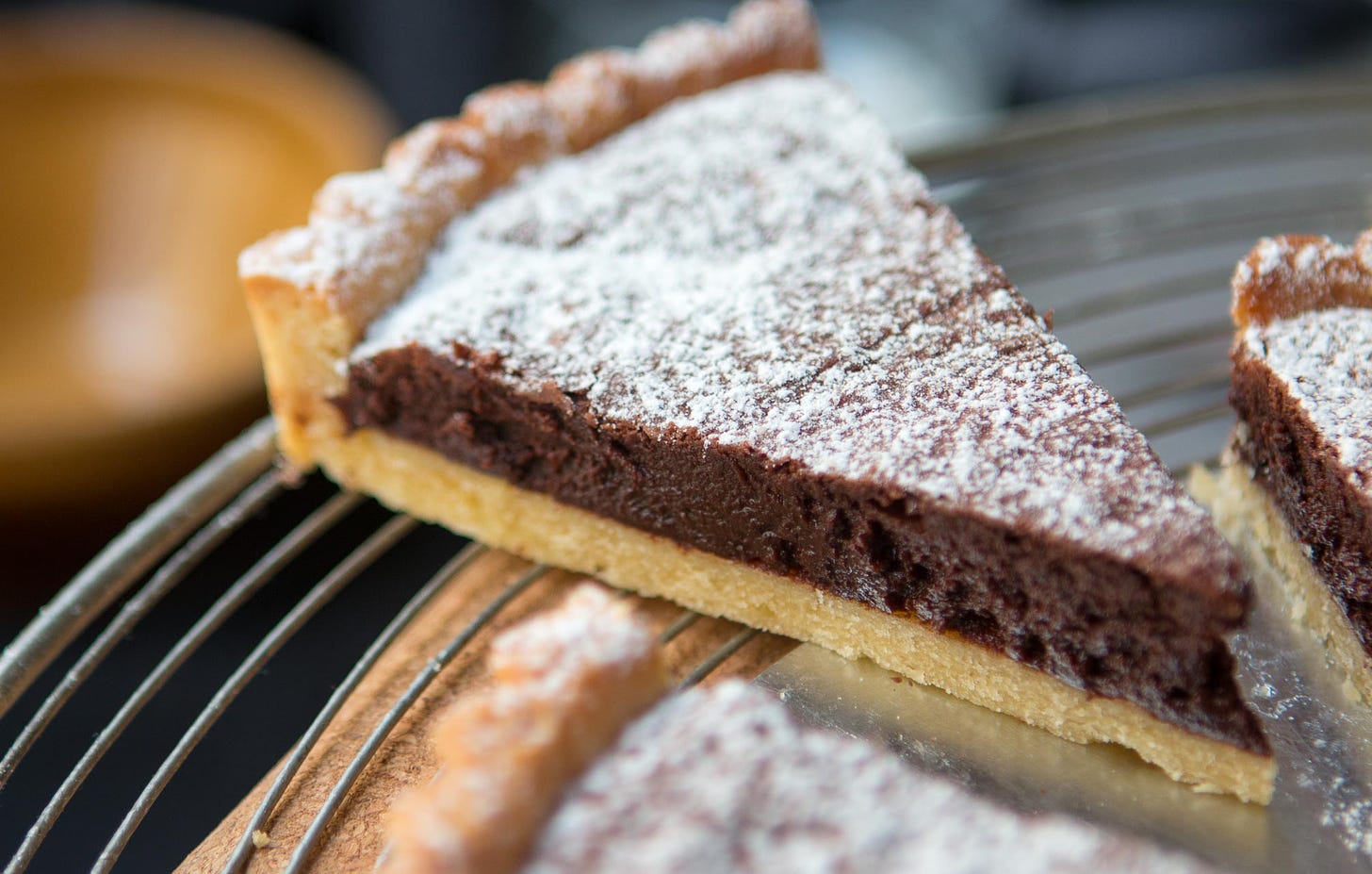
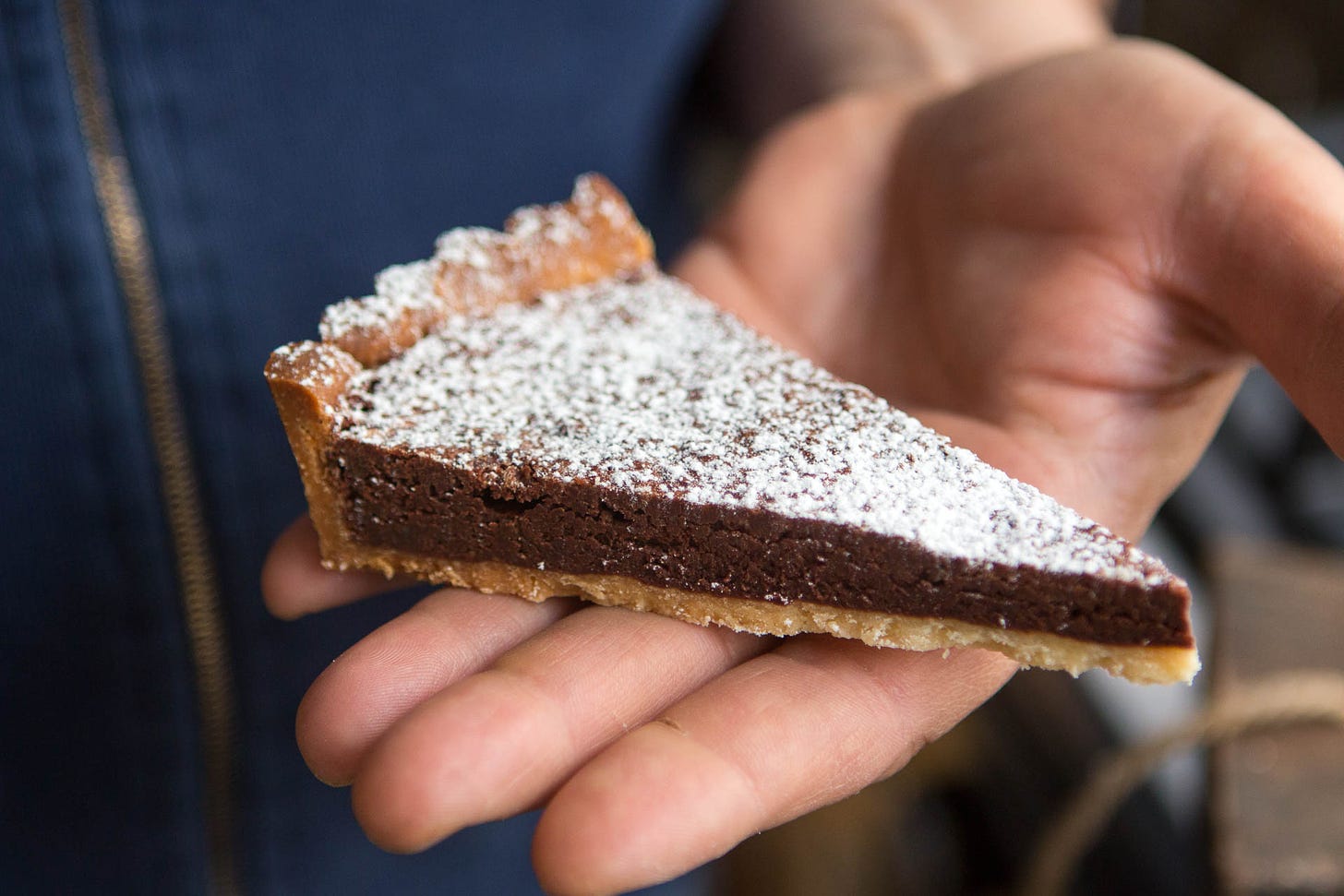
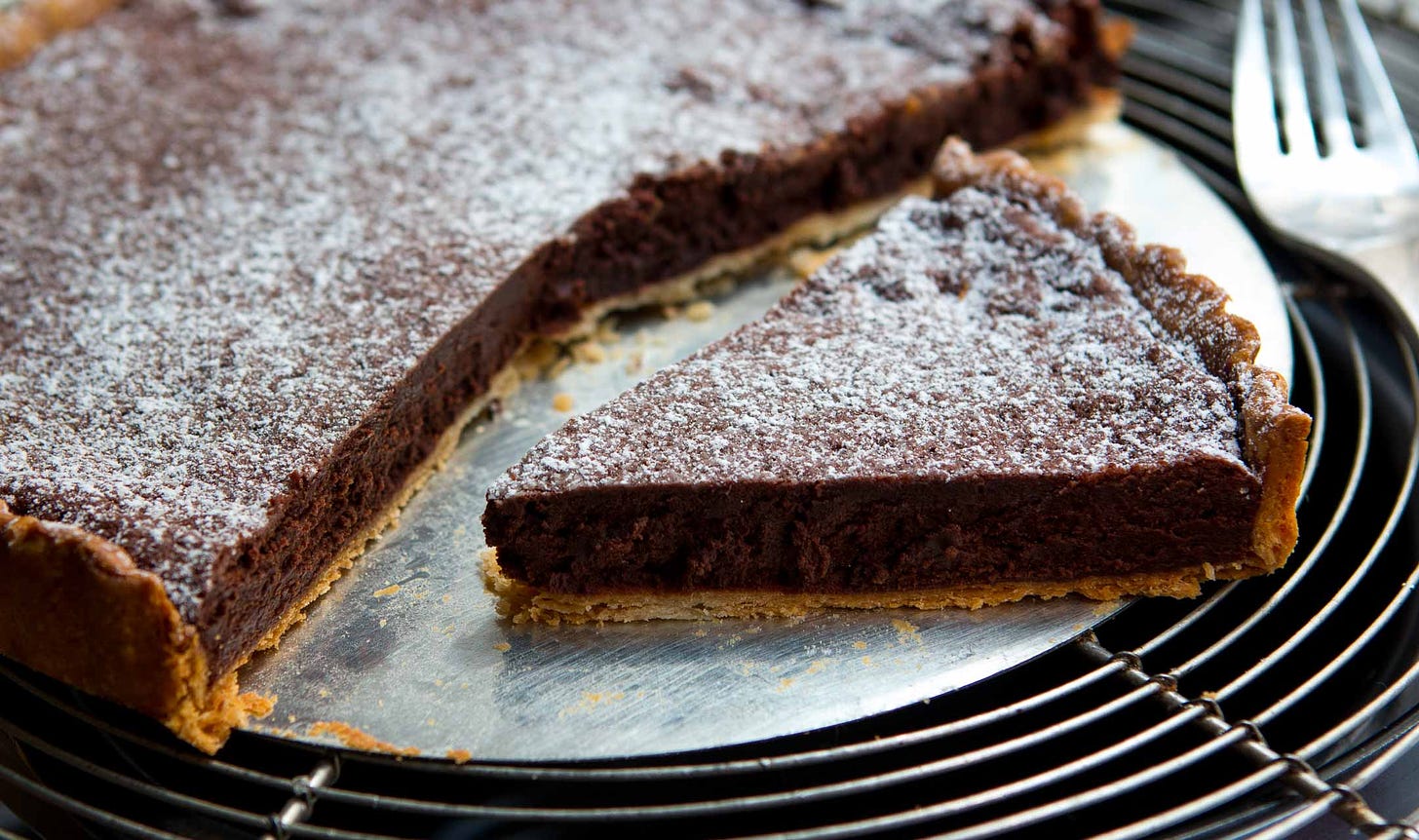






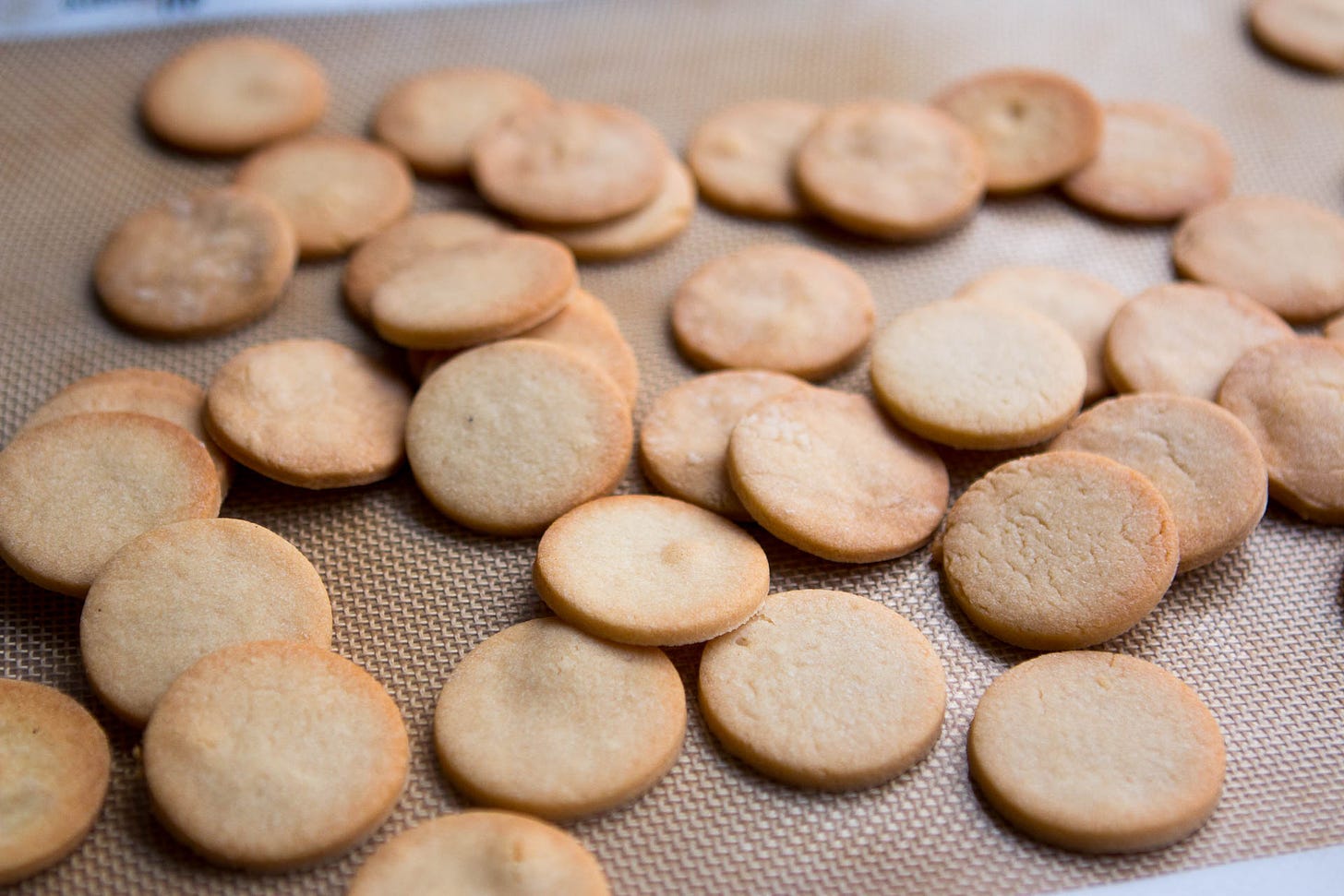
So I did a test document to see if I could make recipe is printable. I added a link just before the recipe, after the headnote. Let me know: 1) If you can see and read it, and 2) If the font is too big. Thanks! : )
What a fascinating post. The description of your method for converting the recipe for the rest of us was very interesting. Incidentally, I was looking for a special restaurant to take my partner to for his birthday a few weeks ago. He is a man and I am a woman. I was about to book Ambroisie, a major treat, when I was one online review said that they handed a guest menu with no prices to the woman they were with, despite the woman being the host and having her name on the booking. For that reason I did not book there. We are going to Pierre Gagnaire instead - let's hope they don't do the same. Maybe it's just old-fashioned-ness as you suggest, but these days I consider it a faute de service, if you can call it that. It happened to me in a Paris restaurant a few years and left a sour enough taste that I never went back. Then it happened again at a Michelin-starred restaurant near Avignon that I took my husband to (again, my treat). The restaurant had a young chef and young staff so I was flabbergasted at such an outdated gesture in 2022. What hotel school is currently teaching 18 year-olds that women should always get a menu without prices? My husband urged me to consider it a momentary error rather than an insult to me as a full participant in 21st century society (which is how it feels). For his sake I tried to forget about it ; the meal did indeed turn out to be delicious and the rest of the service charming. However it still irks me that in a country like France, which prides itself on being the cradle of human rights and equality, this practice seems to be more than an occasional encounter for the 50% of us who happen to be women.
Happy baking to those who're just here for the recipe!